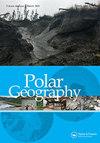三个城市的故事:北极智能可持续城市的概念
IF 1.6
Q3 GEOGRAPHY, PHYSICAL
引用次数: 17
摘要
本文考虑了智慧城市发展的既定指标,并评估了它们在北极城市住区实施的适用性。为此,本文首先调查了智慧城市文献和“智慧”指标的标准化,特别关注国际标准组织(ISO)的分类工作。然后,它提出了一个北方测量框架来评估智能城市,该框架将智能指标从当前的非北极奖学金调整到相对较少的人口、外围开发、偏远地区和环北极恶劣的气候条件。为了验证这一新的智能框架的论点,本文进一步研究了三个处于不同智能发展阶段的环极城市的战略:安克雷奇(美国)、博多(挪威)和奥卢(芬兰)。文章最后指出了每个城市的成功和不足之处。智慧城市是北极地区迈向可持续未来的关键一步,有助于以“更智能”的方式实现经济、社会和环境发展。探索这一点很重要,因为这些框架对北方地区的决策者如何选择规划和实施其城市战略具有重要意义。本文章由计算机程序翻译,如有差异,请以英文原文为准。
A tale of three cities: the concept of smart sustainable cities for the Arctic
ABSTRACT This article considers established metrics for smart city development and evaluates their suitability for implementation in Arctic urban settlements. To do this, the article first surveys smart city literature and the standardization of ‘smartness’ metrics, with particular interest in the International Standards Organization’s (ISO) categorization efforts. It then proposes a northern framework of measurement to evaluate smart cities that adjusts smart metrics from current non-Arctic scholarship to the relatively low populations, peripheral development, remote locations, and harsh climate conditions of the circumpolar north. To test this argument of a new smart framework, the article moves to examine the strategies of three circumpolar cities at different points of smart development: Anchorage (United States), Bodø (Norway) and Oulu (Finland). The article concludes by identifying areas of success and shortcomings for each city analyzed. Smart cities can be a crucial step towards a sustainable future in the circumpolar north, contributing to a ‘smarter’ approach to economic, social, and environmental development. Exploring this is important because these frameworks have implications for how policymakers in northern regions choose to plan and implement their city strategies.
求助全文
通过发布文献求助,成功后即可免费获取论文全文。
去求助
来源期刊

Polar Geography
GEOGRAPHY, PHYSICAL-
CiteScore
5.30
自引率
0.00%
发文量
13
期刊介绍:
Polar Geographyis a quarterly publication that offers a venue for scholarly research on the physical and human aspects of the Polar Regions. The journal seeks to address the component interplay of the natural systems, the complex historical, political, economic, cultural, diplomatic, and security issues, and the interchange amongst them. As such, the journal welcomes comparative approaches, critical scholarship, and alternative and disparate perspectives from around the globe. The journal offers scientists a venue for publishing longer papers such as might result from distillation of a thesis, or review papers that place in global context results from coordinated national and international efforts currently underway in both Polar Regions.
 求助内容:
求助内容: 应助结果提醒方式:
应助结果提醒方式:


